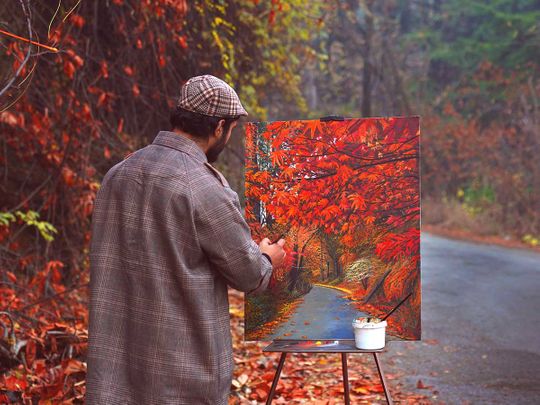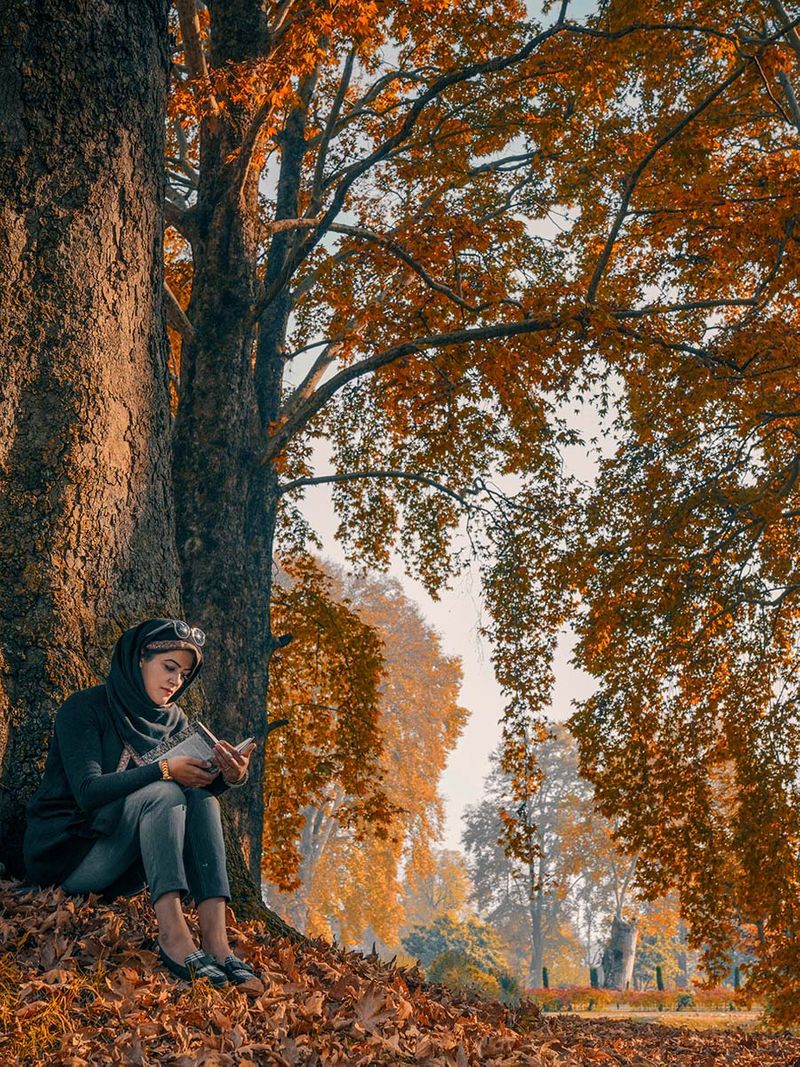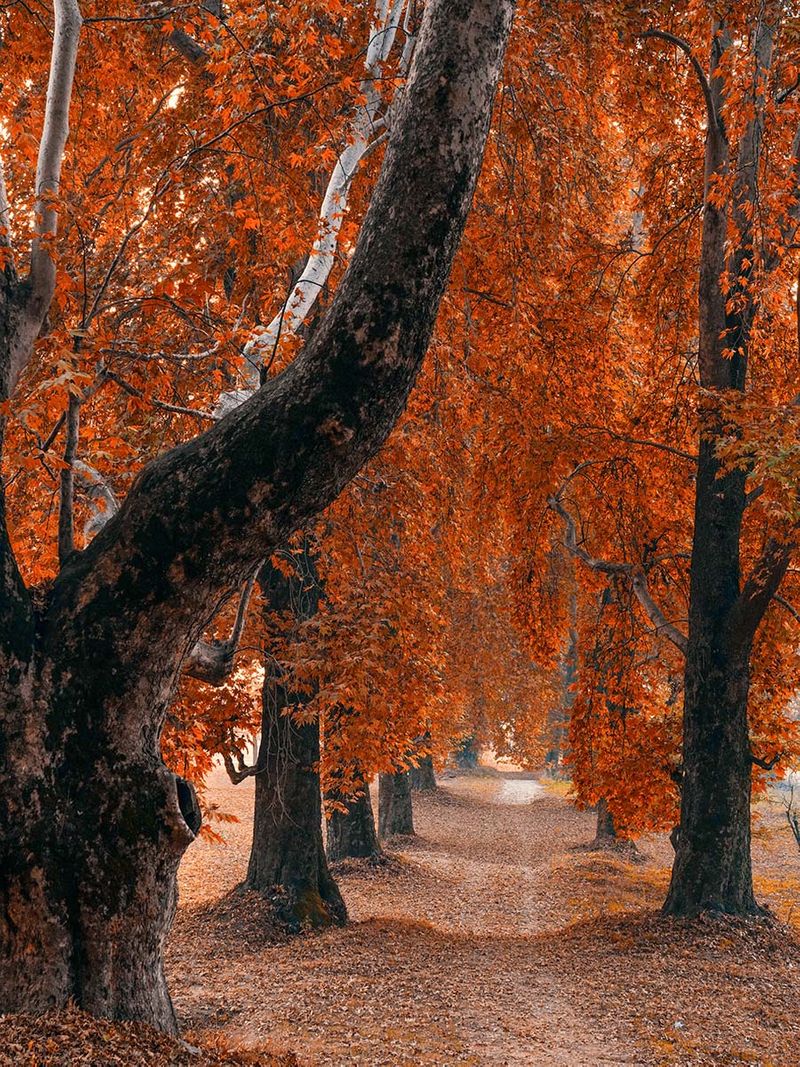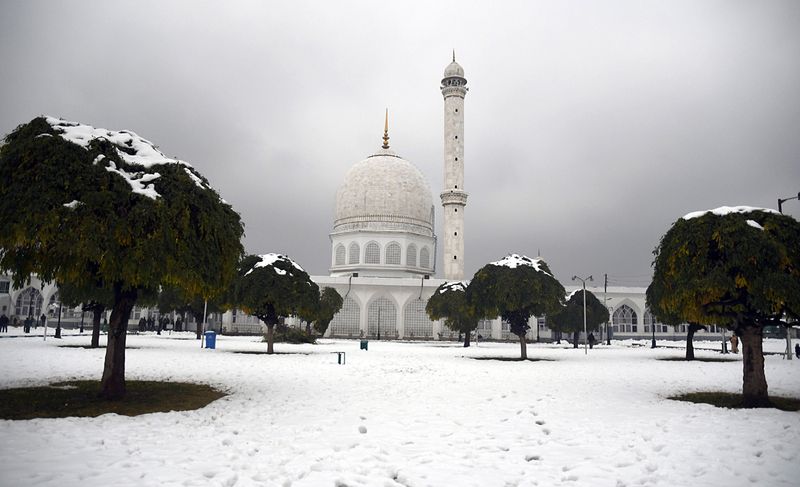
The valley of Kashmir witnessed the season’s first sprinkling of snow in late October. Although officially still autumn, folks tell me that it has started to get cold and very soon we shall witness the onset of winter.
Since I don’t get to be in the valley for most parts, I feel quite nostalgic about getting into the Pheran — long woollen cloak — during Harud (autumn) in Kashmir.
There is something timeless about being in Srinagar around this time. I might be missing an exact expression for it but it is a very mixed feeling. Harp-like. It hits you bang in the brow, mostly on autumn dawns.

Harud itself means loads of work. Farmers get real busy this time of the year, plucking apples and pears in orchards. It is that time of the year when the Oriental plane tree — Chinar — looks its best.
Stark and naked, it sheds its rusty foliage. The crisp orange leaves cover the beauteous landscape of Kashmir like one continuous Oriental rug. Legend has it that plane is the tree of Hippocrates, under which Hippocrates taught medicine in ancient Greece during the Age of Pericles.
Locally called Chinar, the tree has always been the emblem of Kashmir. Reminds me of the poet-philosopher Allama Mohammad Iqbal — of Kashmiri ancestry himself — who in his wistful style waxed eloquent about the valley:
Jis khaak ke zameer me ho aatish-e-chinar
Mumkin nahi ki sarad ho voh khaak-e-arjamand
The land that has in its conscience the spark of Chinar
Thy celestial dust won’t douse yet
Poets and kings alike have admired the Chinar. The Mughal Emperor Akbar who annexed and visited the valley for the first time in 1579 fondly mentions Chinar in his memoir Akbar Nama.
The Char Chinar (four planes), bang in the middle of Srinagar’s famed Dal lake, is a testament to Mughal fascination for the tree. Chinar leaf is a recurring motif in Kashmir’s handicrafts and woodwork.

The tree has been a lonesome witness to the vicissitudes of Kashmir’s fluctuating fortune and its prized possession by rulers of various stripe: from the Buddhist ruler Asoka the Great, who founded Srinagar in 250BC to the various Hindu Kings, who followed him. From the mid-12th century Muslim rule in Kashmir right up to reign of the 19th century Dogra feudatories, Chinar remained a quiet spectator to everything in Kashmir.
Az Jehangir dame naza chi justand
Ba khahishi dil guft
Kashmir diger hech
On his deathbed, the 17th century Mughal Emperor of India, Jehangir was asked by his royal courtiers as to what he wished in the hereafter. With a heavy heart and in a feeble, dying voice, the poet-king replied: Nothing but a soul as refreshing as Kashmir.
A very few things in the world are as scintillatingly exotic as the crisp rustle of fallen dry Chinar leaves in Kashmir during autumn. You just need to take a stroll around the woody shades of Chinar in October and November and you will know why.

The old quarters of the city, I can tell from memory, are enveloped by an early morning tang of Harisa, a breakfast special, this time of the year. Harisa is an Arabic word that means breaking into pieces. Kashmiris prefer a traditional, mildly aromatic meat porridge — steamed and sautéed and served piping hot. The conversation in the Harisa shop (similar to a Kashmiri bakery) is mostly bawdy.
In countryside Kashmir, it is not uncommon to see small bands of people in meadows and pastures around small bonfires. Although mobile phones have disrupted the old style of chatter somewhat, you may still come across folk huddled around a fire, completely unconcerned with the vagaries and problems of the world. Call it idyllic or languid but that is Kashmir.
In a few weeks, it shall snow in Srinagar. It is often humbling to see the snowflakes fall headlong on the still waters of its distant ponds, kissing the stillness. It snows on temples with cold deities looking a shade surprised. And on the countless minarets. In every orchard and onto each saffron meadow. Snow falls upon the lonely hillside. In wetlands. Old chimneys. Soundlessly. In the middle of the night.
Thousands of miles away, during times like these one just shuts the eyes and thinks of home.








